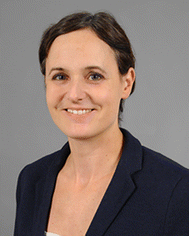Introduction to soft matter aspects of cancer
Anna V.
Taubenberger
 *a and
Tanmay P.
Lele
*a and
Tanmay P.
Lele
 *b
*b
aBiotechnology Center, Center for Molecular and Cellular Bioengineering, Technische Universität Dresden, 01307 Dresden, Germany. E-mail: anna.taubenberger@tu-dresden.de
bDepartment of Biomedical Engineering, Texas A&M University, Texas 77843, USA. E-mail: tanmay.lele@tamu.edu
Cancer can be understood as a multi-scale process that originates at the sub-cellular level, and manifests at increasingly larger scales from cellular, multicellular, tissue, organ, and inter-organ levels. An important hallmark of cancer are the biophysical changes that occur across these different scales. Such changes include, for instance, altered cell mechanical properties and interactions,1 cell-jamming transitions,2 as well as changes in architecture and crosslinking of the extracellular matrix (ECM).3 Each of these aspects can be well studied through the lens of soft matter research, which can facilitate the development of testable hypotheses that may ultimately enable advances in understanding or treatment of cancer.
A critical early step in cancer progression is cancer cell invasion; a process that involves the ability of cells to generate active forces and to change shape continuously during their migration through the tortuous paths in interstitial tissue. At the subcellular level, force generation can be facilitated by F-actin polymerization generating outward-fluctuating, protrusive forces on the cell membrane, while myosin motor activity generates contractile forces that are transmitted from F-actin through transmembrane integrin receptors to the extracellular matrix (ECM).4 The resulting cell-shape changes are dependent on the mechanical properties of the cytoskeleton and organelles, and the architecture and crosslinking of the surrounding ECM. The fluctuating forces generated by individual cells can couple with each other if the cells are close enough, either through the ECM or directly through cell–cell adhesion, resulting in collective cell behaviors reminiscent of phase transitions so common in soft matter. In the case of densely packed cells, such as those present in tumors, which then break away to invade their microenvironments, fruitful analogies have been drawn with a ‘jammed’ solid phase, that becomes unjammed corresponding to a fluidization of the ‘solid’ tumor. Thus, multiple aspects of cancer are of interest to soft matter research.
This themed issue collection of (review and original research) articles contributes to each of the above-mentioned aspects. Hosseini et al. (https://doi.org/10.1039/d2sm00159d) study cell mechanical changes connected to an important cellular program during the acquisition of an invasive phenotype, the epithelial-to-mesenchymal transition (EMT), using biophysical tools. EMT involves characteristic reorganization of the cytoskeleton alterations that not only have implications for cell shape5 and cortical stiffness, but also affect cytokinesis in mechanically confining spaces. Highlighting the importance of cellular forces for cancer migration, Paddillaya et al. (https://doi.org/10.1039/d2sm00015f) provide data that traction stress and adhesion stress correlate with invasiveness in two different cancer cell types.
It has become increasingly clear that collective cell migration plays an important role in cancer cell migration, which necessitates consideration of the mechanical coupling between cells and the phenomenon of cell jamming transitions. In this issue, Fredberg (https://doi.org/10.1039/d1sm01716k) relates the concept of jammed non-migratory phases of tumors to the solid-like state proposed by Kauffman near the ‘edge of chaos’. He discusses the idea that the emergent behavior of collective systems may be conceptualized as moving across the jamming phase space.
Using in silico models to study the impact of cell proliferation and apoptosis on tissue-level mechanical properties, Reddy and Katira (https://doi.org/10.1039/d2sm00174h) argue that proliferation and apoptosis are important events to consider in tissue mechanics and models of unjamming. Sauer et al. (https://doi.org/10.1039/d1sm01291f) report the non-intuitive finding that viscous bulk properties of brain cancer tissue measured in patients using magnetic resonance elastography (MRE) correlate with the stiffness of individual cancer cells but not their viscosity when assessed in vitro by the optical stretcher. They suggest that the influence of cancer cell stiffness on the dissipative properties of tumor tissue may be explained by emergent effects, resulting, for instance, from tissue heterogeneity and stromal interactions causing tissue fluidization.
Stiffened stromal ECM, as commonly found in different types of tumors, further affects tissue-level mechanical properties and can have a relevant effect on cancer progression.3 In this issue, a potential link between metabolic changes and biophysical changes of the ECM is explored by Rowe et al. (https://doi.org/10.1039/d2sm00004k). Using an in vitro model, Rowe et al. demonstrate an effect of glycation end products, which are increased in diabetes, on the matrix mechanical properties, and breast cancer cell shape and motility.
The analogy between cancer and soft matter is incomplete without considering the adaptive response of cancer cells to mechanical forces and to the physical properties of the ECM. Altered mechanical cues activate downstream signaling pathways affecting important cellular processes, such as proliferation, migration and cell survival. Mechanotransduction, which is mediated by complex intersecting biochemical pathways (reviewed by Liang et al. in this issue; https://doi.org/10.1039/d1sm01618k), confers significantly higher complexity on cancer and indeed all living soft matter. Understanding these complexities remains a challenge and will require development of robust in vitro model systems that recapitulate the microenvironment of cancers.
Over the past few years, this has motivated interdisciplinary collaborative studies between bioengineers, biophysicists and cancer-cell biologists. Bioengineered models based on hydrogels or cell-derived matrices are thereby being developed that allow for a more systematic analysis of cancer cell behaviors in engineered 3D tumor microenvironments. In this issue, VandenHeuvel et al. (https://doi.org/10.1039/d1sm01796a) present 3D in vitro model systems to explore gene expression changes and migration behaviors of incorporated cancer cells. Hydrogels can also be employed as drug delivery systems, as explored by Kasapidou et al. (https://doi.org/10.1039/d1sm01003d) in this issue, where they integrate chemoattractant and cytotoxic components for studying the effects on glioma cells.
Taken together, this themed issue collection features a variety of articles that all address soft matter aspects in cancer, spanning the range from studies on subcellular to tissue-level alterations, and theoretical, as well as experimental, approaches.
References
- V. Gensbittel, et al., Mechanical Adaptability of Tumor Cells in Metastasis, Dev. Cell, 2021, 56, 164–179 CrossRef CAS PubMed.
- K. Wolf, et al., Physical limits of cell migration: control by ECM space and nuclear deformation and tuning by proteolysis and traction force, J. Cell Biol., 2013, 201, 1069–1084 CrossRef CAS PubMed.
- J. Winkler, A. Abisoye-Ogunniyan, K. J. Metcalf and Z. Werb, Concepts of extracellular matrix remodelling in tumour progression and metastasis, Nat. Commun., 2020, 11, 5120 CrossRef CAS PubMed.
- M. F. Olson and E. Sahai, The actin cytoskeleton in cancer cell motility, Clin. Exp. Metastasis, 2009, 26, 273–287 CrossRef PubMed.
- J. P. Thiery, H. Acloque, R. Y. J. Huang and M. A. Nieto, Epithelial-Mesenchymal Transitions in Development and Disease, Cell, 2009, 139, 871–890 CrossRef CAS PubMed.
| This journal is © The Royal Society of Chemistry 2023 |


